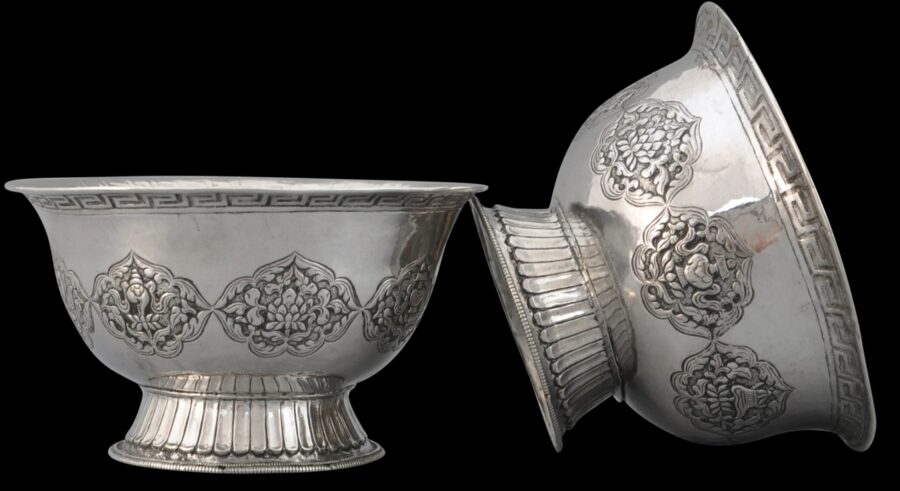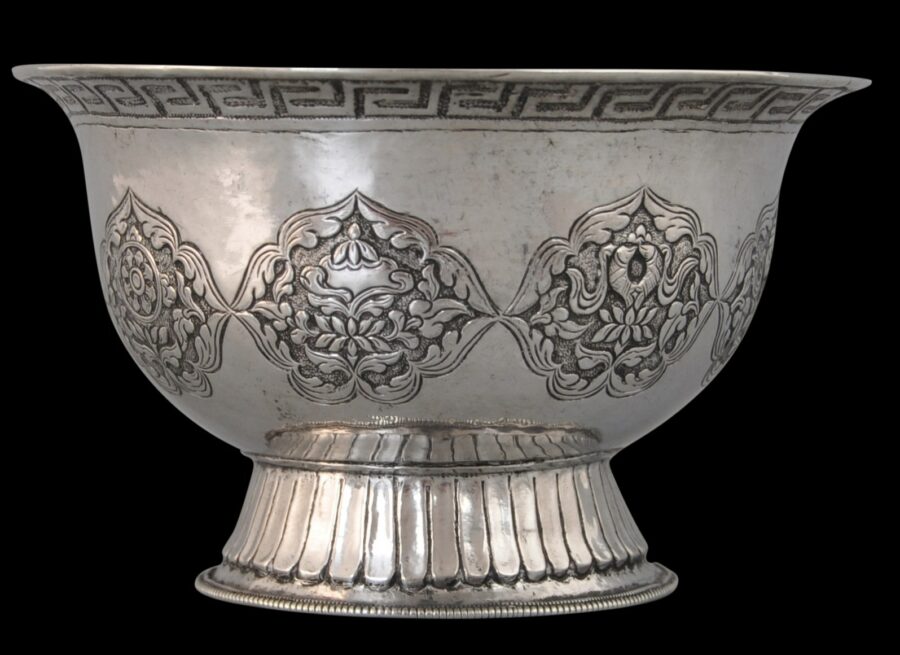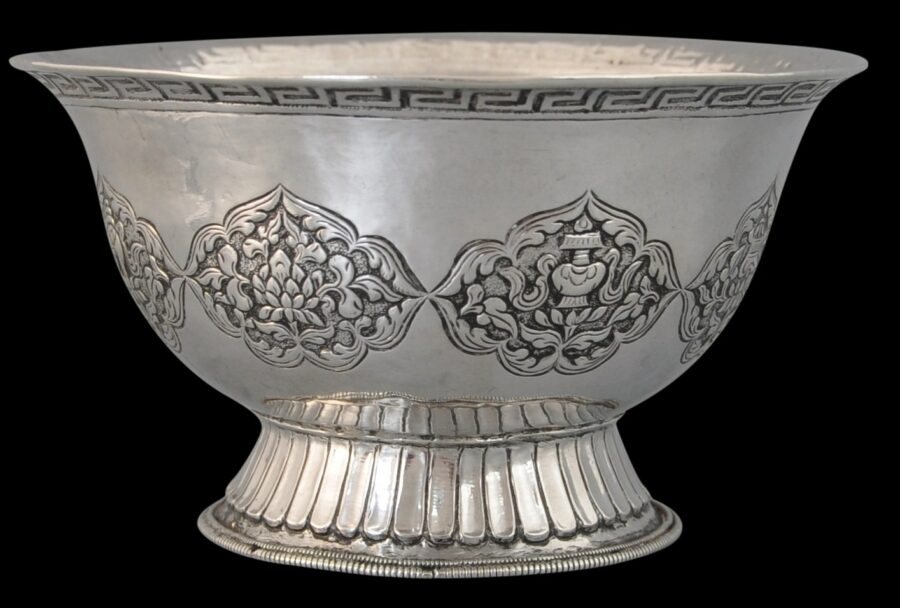Enquiry about object: 9365
Pair of Himalayan Large Silver Yak Butter Lamp Bowls
Tibet or Bhutan 18th-19th century
height: approximately 7.8cm, diameter: approximately 14cm, combined weight: 415g
Provenance
collected by (then) Major R.L. Vance, probably in the 1920s in either Bhutan or Tibet
This fine pair of butter lamp bowls of beaten high-grade silver are of a good size. Each sits on a flared foot decorated with elongated lotus petals. The sides of each are finely engraved with eight cusped cartouches, each one being decorated with one of the Eight Auspicious Symbols of Tibetan Buddhism. These are the endless knot, the treasure vase, the lotus flower, the two golden fish, the parasol, the conch shell, the dharma wheel, the banner of victory.
Each bowl opens out with a wide mouth and is engraved with a key-fret border below each rim.
The interior of the base of each bowl is engraved with a swirling foliate medallion.
Butter lamps and butter lamp bowls are placed in all Tibetan and Bhutanese shrines, usually before images, on a low altar. Beaten copper is the most common medium for such vessels, but silver is used as well. They are symbolic of the sacred flame and use oil to illuminate the altars on which they are placed. Such lamps were filled with yak, goat or cow butter which fuelled burning cotton wicks.
The bowls are a pair but one is slightly taller than the other, befitting their hand-made status.
The bowls were collected by (then) Major R.L. Vance, perhaps in 1927, when he accompanied Lt Col. & Mrs Bailey to Bhutan during an official visit for the installation ceremony of the second Gongsa of Bhutan, Jigme Wangchuck, or earlier when he served as Medical Officer in Gyantse, Tibet, where the British maintained a military garrison. (Bailey was Britain’s Political Officer for Sikkim and Tibet, and was stationed at Gangtok in Sikkim.)
Overall, this pair of lamps is highly decorative. Their silver purity is noticeably extremely high, and their age is obvious. The rim of one has an old age-related crack but this has been closed and is minor. It is likely that they are made from silver that is pure or almost pure.
References
McKay, A., British-Indian Medical Service Officers in Bhutan, 1905-1947: A Historical Outline, Centre for Bhutan Studies, 2013.
Reynolds, V., Tibet: A Lost World: The Newark Museum Collection of Tibetan Art and Ethnology, The American Federation of Arts, 1978.














